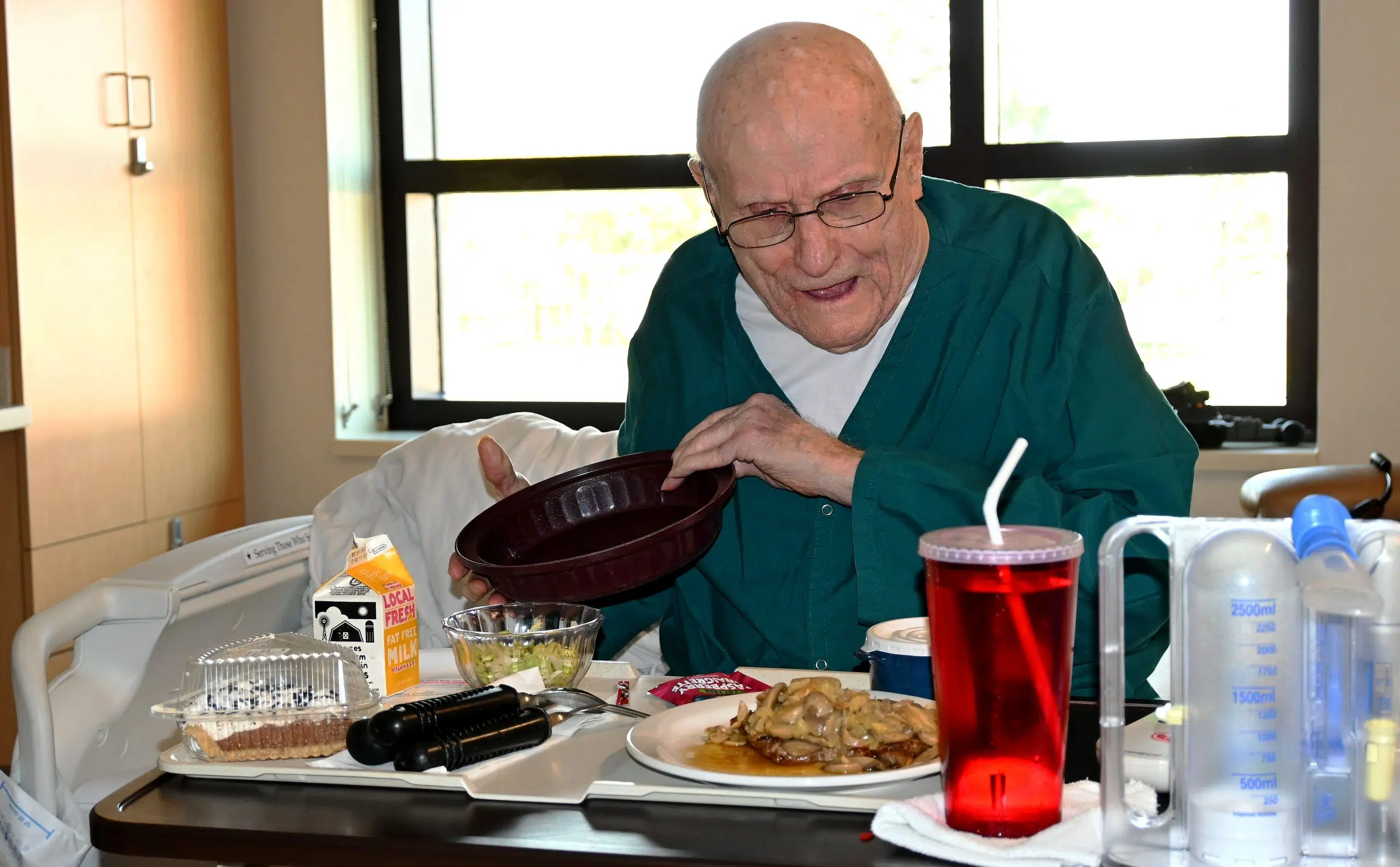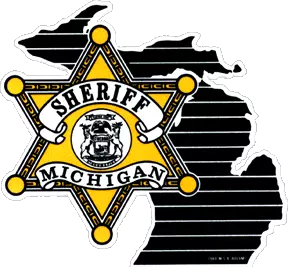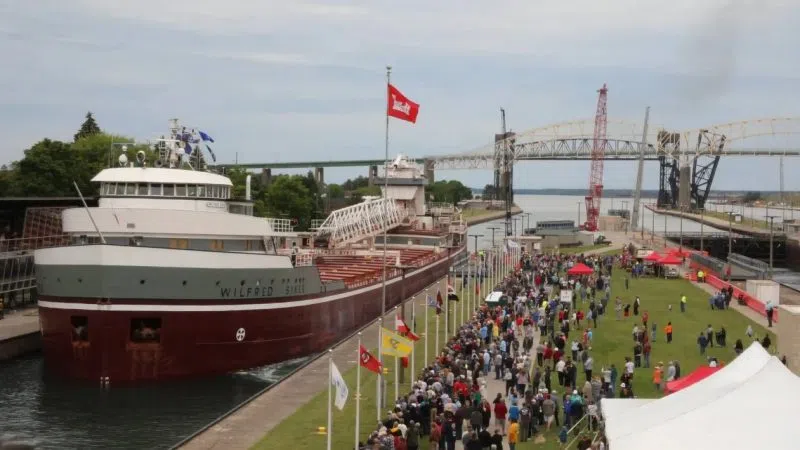Story courtesy of the Oscar G. Johnson VA Medical Center
In November of 1943, as a stock clerk at the Peterson Boat Works in Sturgeon Bay, Wis., John Moddie signed his name and enlisted in the U.S. Army. A decision that changed his life in ways no one could have imagined.
After basic training at Camp Roberts, Calif., a slender, 5-foot 11-inch, Moddie was assigned to B Battery, 590th Field Artillery Battalion, 106th Infantry Division at Camp Atterbury, Indiana.
According to the then 18-year-old, he was excited to start something new from his life in Wisconsin.
Moddie spent a few short months learning the ins and outs of the 105 mm howitzer, a large, towed field artillery gun, before packing up his gear and heading to war. His first stop was in England to receive trucks and howitzers.
“The ships that brought us over were civilian transports, not naval,” explained the 97-year-old. “We were only there a short time. We were allowed to go to the local pubs at night but had to be careful due to the blackout conditions we were under. The cars only had small blackout lights on them that were hard to see. We had a few close calls on the way back to the base.”
Before leaving England, Pvt. Moddie volunteered to be “second gunner,” a targeting duty on the 8-man crew of the howitzer, earning him a field promotion.
The morning of Nov. 30, 1944, Pfc. Moddie and the 590th boarded landing ship, tank (LST) landing crafts on the English Channel. The following morning the small fleet of LSTs crossed the channel to LeHavre, France, and awaited orders to sail up the Seine River.
“That night a massive storm busted the fleet up bad,” he explained.
Two ships lost their anchors and spent the next 36 hours floating into the channel and sailing back into the harbor.
“I never knew why we got stuck on the boats for so long and was surprised to find out it was because of the LST’s losing their anchors,” John said. “It took more than 60 years for me to learn this.”
Once they landed, John and his crew of seven others were on their way from France into German territory to take part in what would become known as the Battle of the Bulge.
The Battle of the Bulge took place from Dec. 16, 1944, to Jan. 25, 1945, and was the second-most deadly American battle in number of Americans killed, at more than 19,200.
As John and B Battery made their way into Germany toward Schnee Eifel, they were strafed by Nazi fighter planes that where quickly dispatched by a pair of P-47 Thunderbolts.
John found himself on the front lines late that afternoon and hurried to dig in before dark. It was a long, cold, noisy, and miserable night.
Besides very cold feet and hands, John and the men were pounded with enemy artillery as V-1 flying bombs soared only about 50 feet above their heads.
“The V-1s sounded strange, like the putt putt sound of a Model-T Ford engine,” he said.
They were mostly ignored by the Germans, but the weather still played havoc with them as they froze at night.
“One night we took over an abandoned German farmhouse,” John recalled. “We were actually warm for a night due to all the quilts.”
Bumper to bumper in their vehicles, the 590th moved through the night. At nearly midnight they reached Auw-Bleialf Road and the vehicles dispersed.
“During the ride, I could see some of the German artillery off in the distance that would fire over our heads,” John said. “The rounds rained down like shrapnel.”
At this point Pfc. Moddie had been up almost 60 hours and dropped in his tracks. His rest was short lived as a command post runner alerted him again.
The two roads back toward Schonberg had fallen into German hands. It was decided the 590th would follow closely with the infantry, hearing little and seeing less.
“That night there was lots of gunfire,” John said. “That morning we found ourselves in a narrow valley with wooded slopes on both sides and a swampy ground to the front. A small stream was in front of us with stuck vehicles blocking our path and (American infantry) bodies everywhere.”
A little after 9 a.m. the batteries dispersed, A and C forward near the stream and B to the rear around a curve in the wood line. John and his crew ended up closest to the wood line. Shortly after setting up, they began taking machinegun fire from the ridges, and shells began exploding around the vehicles.
“We fired the howitzer starting out with multiple bags of powder for more distance, and slowly we’d reduce the amount as the Germans advanced on our position,” Moddie said. “We only had short breaks in the action once and a while to readjust aim as the forward observers reported in. We fired 200 to 300 rounds a day until we were firing point blank.”
Command sent word to the gun positions to destroy in place the howitzers and any other equipment that might be used against them, and to surrender. Little did John know German forces had gotten behind them.
“The Germans advanced so quickly once the order was given that we barely had time to drop our weapons before they had us on the ground,” he said. “I was only able to destroy my rifle by bashing it on the ground. Some of the others were able to remove small components from the big gun making it unable to target or shoot.”
Moddie was captured Dec. 19, 1944, along with 20 to 25 others.
“We were marched by the Germans through the swampy valley. The water there ran red with blood,” he said. “When we crossed over the hill out of the valley, I could see the devastation the artillery had caused was massive. There were a lot of Germans and Allied soldiers lying dead in the craters we walked around.”
We squeezed close to the walls of the buildings in any town we marched through because of the large German tanks passing by us on the tiny roads, John said.
He marched for days until he reached a railyard where the Germans confiscated the good cold-weather gear they had, then loaded the soldiers onto boxcars where it was standing room only.
More than once Allied planes strafed and bombed the trains not knowing POWs were inside.
“Some of the boxcars on other tracks were knocked over from the bombs and left behind,” he said.
John was taken to Stalag 9B in Bad Orb Germany. He was led into a large unheated building with multiple bunk beds, two to five high, covered in straw.
“The beds were so lice infested no one bothered to sleep in them,” he said. “This outraged the Germans and they moved us to another building with no bunks.
At night I’d try to get to the door of the building without stepping on anybody to go pee, but there were no lights,” John added.
He was allowed to write one letter home a month via the Red Cross, but the Red Cross packages he requested from home were kept by the German guards. John got two small meals a day, the evening meal sometimes came with a small amount of bread.
“We spent many days hungry and assisting others in picking the lice and ticks off each other,” John said. “One day they brought us into a field that was surrounded by machine guns because one of the German soldiers was killed. They gave us an ultimatum to turn in the killer by nightfall or they would just kill everyone.
No one knew who it was that killed the officer, but we didn’t have to wait long,” he added. “The Germans got the bloodhounds out and found the bloody coat of an American soldier who had stashed it in a snowbank and tried to cover it up. We didn’t know what happened to him after that, but he was never seen again.”
On April 2, 1945, about four months after being captured, the Niagara, Wi., graduate, was liberated from the camp by allied troops. He woke up that morning to an empty camp and open gates. The Germans had fled through the night rather than be captured by Allied forces. John went from 150 pounds prior to be being captured to about 85 pounds at the time of his release.
He was given coffee and doughnuts from fellow Americans from the Red Cross. John told his family in a letter that he was freed and should be home soon for some of his mom’s home cooking.
“I told my mom that once I get home, I never wanted to leave again,” John said.
He was held in the camp to build strength for the trip home, and in early April 1945, began his trek back to the United States. He flew to Camp Lucky Strike in France and was kept there three to four weeks for food and medical treatment.
John likes to tell the story about the trip home on the big ships across the Atlantic. When they tried to eat, the ships rode the waves so hard no one could keep food down.
“I went to the small store on board and bought a box of Hershey bars, that got me home without any more bouts of seasickness,” John recalled.
After reaching the United States, he was given a two-week furlough in a hotel in Palm Beach, Florida, with a meal card for the hotel restaurant for three meals per day. From Florida he went on to Fort McClellan, Alabama, and then to Fort Hood, Texas, for outprocessing. Once home, he took on many jobs.
“I really liked being a cigarette salesman with Liggett Myers Cigarettes because they gave me cars and free smokes,” John said. “I worked building the mill in Quinnesec, (Michigan), two of the shopping malls in Iron Mountain and even worked in the maintenance department at the VA.”
The POW camp survivor married his wife, Betty in 1971. They built a home in Quinnesec, and had two sons, John and Gary, and a daughter, Betty Ann Stewart.
He enjoys reminiscing about the cars he had “back then.” His favorite was a 1934 Plymouth that was one of his first cars.
“I really liked the style of the car and the little button I could pull that let me stay at the same speed,” John said.
Quick with a joke or advice, John always has a smile on his face. He gets up every morning and walks the length of the community living center to pick up his newspaper. He stops for a cup of coffee on his way back, then reads his paper from cover to cover.
“I like to see what’s going on around the area because the news channels don’t do a very good job and get stuck on the same thing for multiple days,” he explained.




























Comments